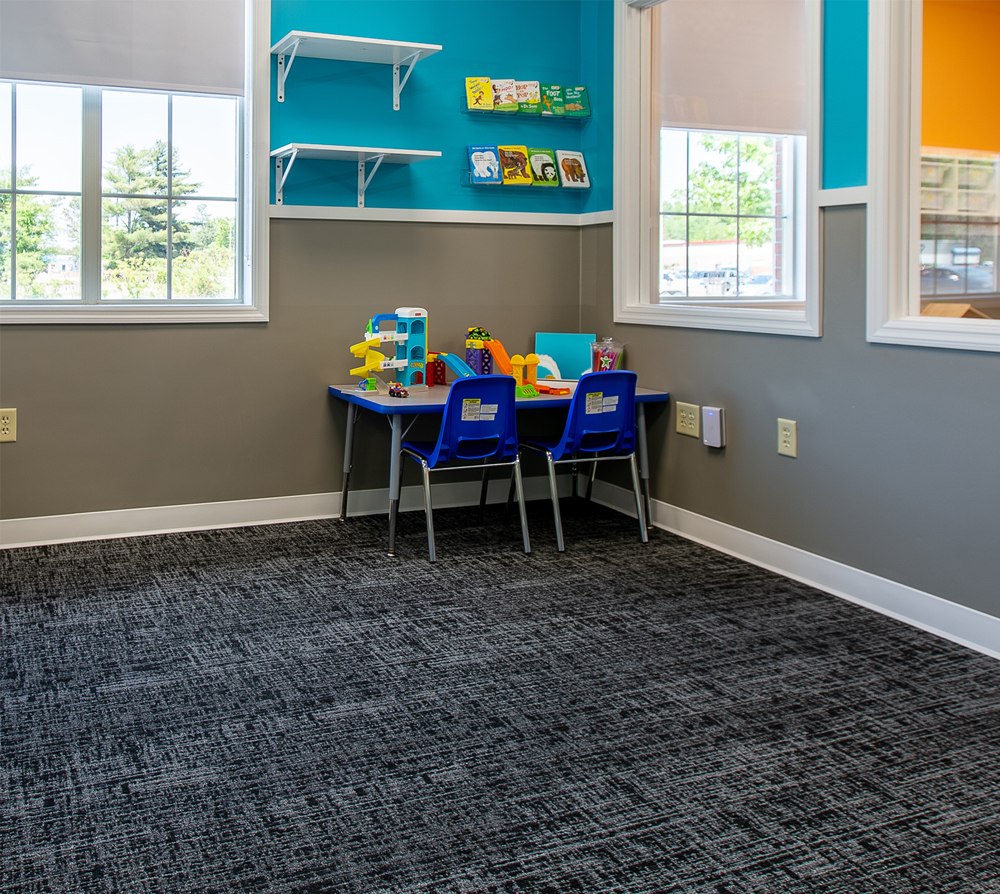Consistency versus Chaos
Predictability and consistency with visual schedules, organized activities, and clear routines can help to reduce anxiety and support learning. Autistic children can thrive when parents or caregivers create structured environments.

Consistency Versus Chaos
In general, children thrive on routine. But for those with spectrum and developmental disorders, it becomes difficult to process all the sensory information that is coming at them. The world inundates us with billions of information bits that require processing on a second-by-second basis. There is information that comes in through our senses about the function and structure of everything one experiences. Qualities, movements, quantities, and objects are all processed simultaneously by the senses. When a child has a difficult time processing this information quickly, they may act out, start to withdraw from the world and retreat into a world of their own thoughts.
Learning New Information
Pretend for a moment that you are sitting in a calculus class, and this is the very first time you are exposed to math. How long will you sit there before you understand what is being taught? It’s a safe bet to say for many that it would be a long time. At first, you would be so overwhelmed that you try to pay attention. However, slowly, you would stop. You might start looking around the room, doodling on some paper, or humming your favorite song in your head. The point is that very little of your attention will be directed at what is being taught, and instead, you retreat into the sanctuary of your own mind, where things are familiar and understandable.
Conversely, now pretend that you are sitting in your very first calculus class, but before you got there, you learned everything needed to understand the class and be successful. Chances are pretty good that now you find the class more interesting. It holds your attention.
The point here is that if you have acquired the skills needed to take the next step forward, you will be more willing to take it and have greater success at it. Now consider this reality for autistic children.
When parenting an autistic child, we are often faced with the dilemma of whether or not we should add more structure to our child’s life. (This is true really of parenting children on and off the spectrum, but when parenting an autistic child, it has a different importance.) Deciding whether to create more routines for them to help them be more successful or to allow them to struggle so they can adapt to the world around them can be difficult. Let’s face it; the world stops for no one, and that isn’t going to change. Sensory processing disorder and autism can make it even more challenging to take in all these senses. Many of us set up visual schedules for our children to help make their lives easier.
Visual Schedules and Autism
The real question is, do we adapt structures and schedules for our children, or do we start to teach them the real world?
There is no clear answer. However, adding structure helps when you want to teach an alternative skill or introduce a new or complex activity. But why are visual schedules important for autism? A visual schedule structure helps make information processing easier for the child. There is a time and place for adding structure. Adding structure means that there are pre-requisite skills or other skills that are important to teach.
Whenever you plan on adding structure, keep in mind that it should always point to a plan of decreasing that structure in the future so that your child can get used to the unpredictability of the world. A structured environment should never be the goal. Once the pre-requisite skills are learned, the structure needs to be decreased. Yes, this can create some temporary turmoil, but if you do it correctly, it will help teach new skills in a more natural environment.
How To Create a Visual Schedule
Creating a visual schedule for autistic children can help enhance their understanding and organization when it comes to daily activities. Virtual parent training can help identify key activities in the child’s routine. It’s important to remember that autistic children are often visual learners, so pictures of the tasks may help them better understand what they are asked to do. A visual card with a picture for each step will outline the rules of the activity to make it easier to understand. When the child completes the task, remove the picture card from sight so that they know the step is completed. When it is time to teach a new skill, add more structure. As the skill is learned and mastered, the structure can be faded.
The Benefits of Structured Play
A structured environment for people with autism provides many benefits, including:
- Building coordination and strength.
- Increasing fine motor skills.
- Learning new tasks through instruction.
- Helping a child develop turn-taking and self-regulation skills.
Of course, there should be a balance between unstructured and structured environments. The autism tools for parents can help you create an equal amount of both structured and unstructured play activities, as both can help a child’s social, emotional, and physical environment.
Routine and Autism
A daily schedule can benefit autistic children in so many ways. It can help them foster stability and comfort in their lives. Some of the more prominent benefits that a routine can foster include:
- Reducing stress and power struggles: When an autistic child becomes more familiar with their surroundings and expectations, these routines can help them navigate their life with more confidence.
- Improving motivation and cooperation: It can help reduce stress levels, which can ultimately lead to strengthening existing skills and being receptive to learning new ones.
- Creating an environment of security and comfort: Autism and sensory issues go hand in hand. It can be overwhelming for autistic children to make sense of new sounds, behaviors, or events. By creating a secure environment, order is established, allowing children to excel in comfort.
- Consistency: With autism, consistency is key to an effective, productive routine. Parents or caregivers should complete every step in their routine in the same order. Once the child is consistent with their routine, changing things can cause them to become upset.
It is vital to remember that autistic children all learn differently. This is why it is important to consult with an autism specialist to understand what skills your child has, what needs to be developed, and how your child learns. A team of dually certified clinicians designed the Lighthouse ABA fusion therapy to help parents. You can find out if this approach would suit your child.
Together, we can unlock your child’s potential
Related News

06/11/2025
Overcoming Stereotypes
Autism stereotypes are common and can have significant social consequences for autistic children. Misconceptions hinder the acceptance and inclusion of autistic children. Challenging these stereotypes is vital for creating a more understanding and supportive society. Challenging Common Autism Stereotypes When people hear the word “autism,” they often imagine a narrow set of images, like the […]

06/11/2025
What’s Next After ABA Therapy?
There are a number of reasons why an autistic child might stop ABA therapy, and one is that they have reached their goals. In this article, we take a look at what parents can expect going forward. What Are the Next Steps After ABA Therapy? As a parent, you only want what’s best for your […]

06/11/2025
Do Babies with Autism Smile?
We take a look at the importance of early intervention, some of the milestones for parents to look out for, and the more common signs of autism in babies. Do Babies with Autism Smile? Watching your baby grow is an exciting time, certainly one of life’s quiet wonders. From those first sleepy stretches to the […]


